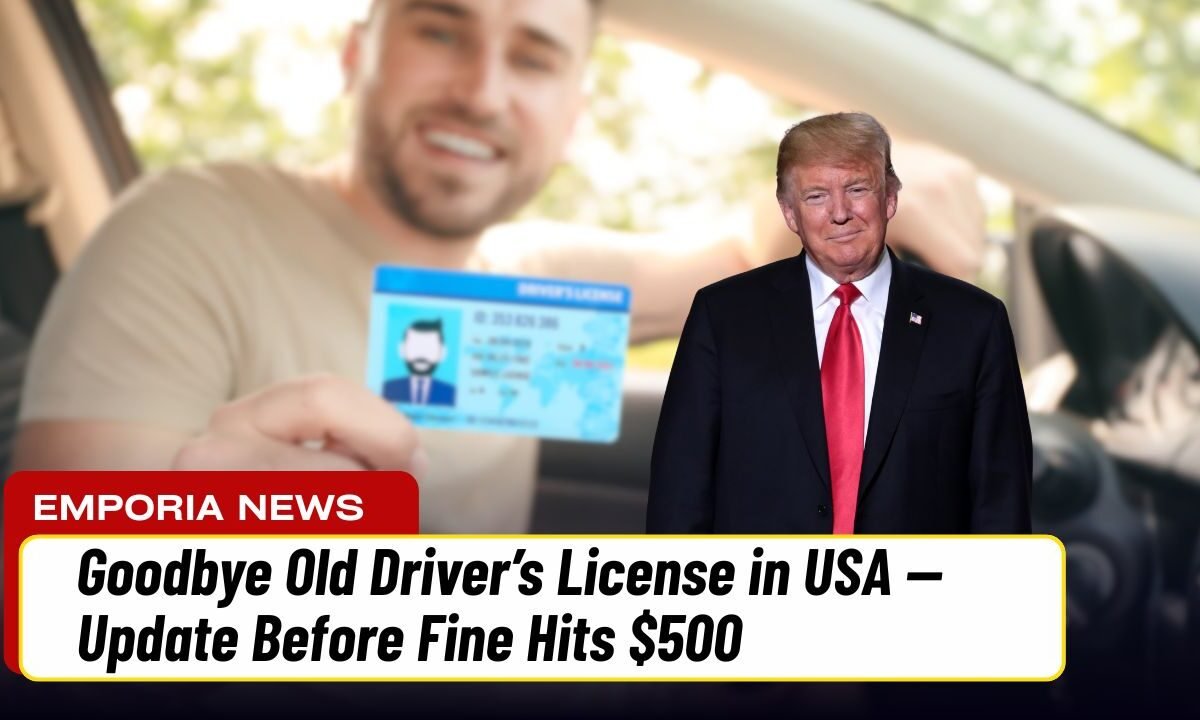Starting October 1, 2025, U.S. drivers must ensure their state-issued driver’s license is REAL ID-compliant, or risk losing access to domestic flights, federal buildings, and paying potentially steep fines. Many states are warning that failing to update could lead to penalties up to $500.
This isn’t just a bureaucratic tweak—it’s a fundamental change in how identification works across the country.
In this article, we’ll walk you through every relevant fact, figure, and procedure you need to know to stay compliant and avoid penalties.
What Is the REAL ID Requirement?
The REAL ID Act, passed by Congress in 2005, set new federal standards for state-issued driver’s licenses and identification cards. These standards require stricter proof of identity, proof of Social Security, and proof of residency.
Once a state issues a REAL ID-compliant license, it is marked with a star (or similar symbol) in the corner to signify compliance.
After the deadline (October 1, 2025):
- Licenses that lack the REAL ID star will no longer be accepted for boarding domestic flights.
- They also will be rejected for entry into many federal buildings, federal courthouses, and other secured federal facilities.
- In certain states, drivers with non-compliant licenses may be subject to fines up to $500 for noncompliance.
Key Facts & Figures (At A Glance)
| Item | Detail / Value |
|---|---|
| Deadline for REAL ID acceptance | October 1, 2025 |
| Maximum Fine for Noncompliance | Up to $500, depending on state |
| Who is affected | All U.S. licensed drivers who do not yet hold REAL ID licenses |
| Marking to look for | A star symbol (or equivalent) in top corner of license |
| Documents typically required | Proof of identity, Social Security number, proof of residency |
| Process | Usually in-person or partially online via state DMV |
| Use of noncompliant license after deadline | Still usable for driving in many states, but not for federal purposes (air travel, federal buildings) |
Why States Are Phasing Out Old Licenses
- Enhanced Security & Fraud Prevention
The new standards make it harder to forge, tamper with, or fraudulently obtain identification. - Uniformity Across States
The REAL ID system establishes a federal minimum standard so that all 50 states and U.S. territories operate to a baseline. - National & Transportation Security
The U.S. Department of Homeland Security enforces the change to prevent identity-related threats and better control access to sensitive areas. - Enforcement of Identification Standards
With this change, state and federal systems can rely on a consistent level of vetting for identity verification.
How to Determine If Your License Must Be Updated
To check whether your license qualifies:
- Look for the star symbol (or similar mark) in the top right corner.
- If there is no star, that license is not REAL ID-compliant.
- Even if your license is not yet expired, you will need to apply for REAL ID under many states’ rules.
- Review your state DMV’s official website to confirm your particular state’s rules.
Step-by-Step: How to Upgrade to REAL ID
- Gather Required Documents
- Valid proof of identity (e.g. U.S. passport, birth certificate, permanent resident card)
- Social Security documentation (SSN card, W-2, pay stub)
- Proof of state residency (two documents such as utility bills, lease agreement, bank statements)
- Make an Appointment with Your DMV
Many states require you to schedule an in-person visit to submit your documents. - Submit Application & Pay Fees
The cost is typically similar to your regular license renewal fee, which varies by state. - Receive Your REAL ID License
Upon approval, you’ll receive a new license with the compliant marking. - Use Alternative ID Until Issuance
If your new license hasn’t arrived, use a valid U.S. passport, passport card, or another federally accepted ID when necessary.
Consequences & Penalties for Noncompliance
- Flight Denials: TSA will refuse noncompliant licenses for boarding domestic flights.
- Restricted Access: You may be denied entry to many federal buildings, courthouses, or military bases.
- State-Level Fines: Some states have proposed or introduced fines up to $500 for using or holding noncompliant licenses in prohibited contexts.
- Variable Enforcement: Penalties vary by state—some may issue warnings first, others may impose full fines.
- Insurance & Legal Risks: Driving with a non-accepted license in some contexts could complicate insurance claims or legal issues.
It’s important to emphasize that the $500 fine is not a uniform federal penalty—rather, it’s the maximum in many states for offenses tied to non-compliant or invalid licenses.
State Variations & What to Watch Out For
- States differ in how strictly they enforce fines or restrictions.
- Some states already penalize expired or invalid licenses fines ranging $50 to over $1,000, depending on severity and repeat offenses.
- Certain states may implement additional rules for senior drivers (e.g., more frequent renewals, vision tests, road tests) for license validity.
Always check your state’s DMV or licensing authority for exact procedures, fees, and enforcement policies.
The shift from “old” driver’s licenses to REAL ID-compliant licenses represents a major transition in U.S. identification systems. With the deadline of October 1, 2025, and potential fines up to $500 in many states, delaying the update is risky.
While you may still drive locally with your current license, its utility for federal use—flying, entering certain buildings—will be curtailed.
FAQs
Is the $500 fine a national law?
No. The $500 fine is a ceiling that many states propose for noncompliance, but there is no single national penalty. It depends on your state and whether it enforces such fines for using or holding non-compliant identification.
Can I still drive with my old (non-REAL ID) license after the deadline?
Yes — in most states, your license remains valid for ordinary driving within your state. But it won’t be accepted for domestic air travel or entering many federal facilities.
What alternative IDs are acceptable for air travel or federal access?
You can use a valid U.S. passport, passport card, military ID, or another federally accepted identity document in lieu of a REAL ID.




